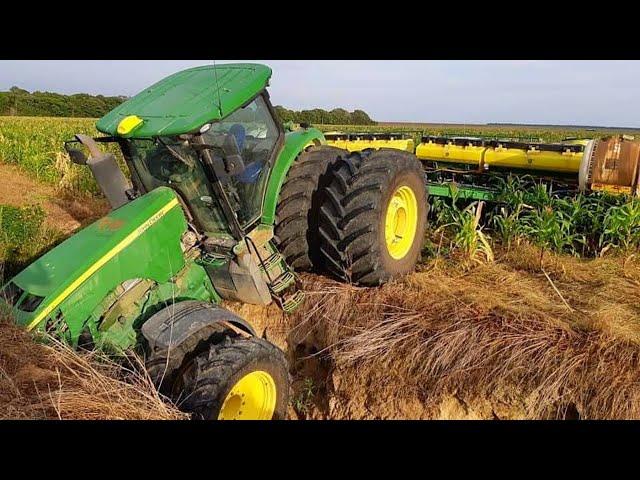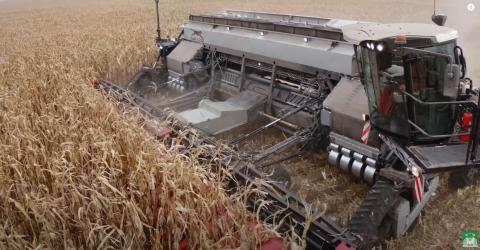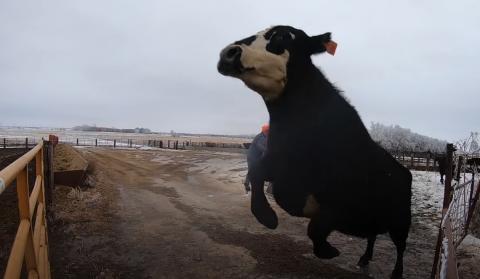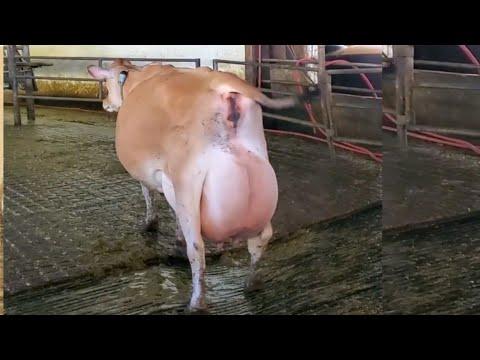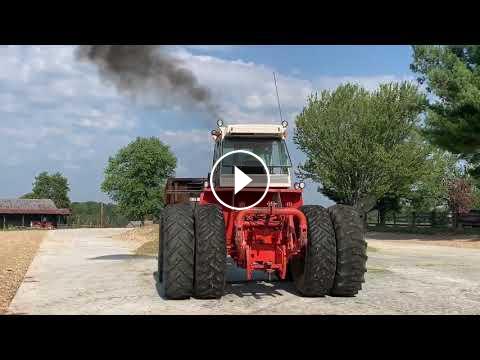Corn silage is also a good feed for beef cattle and especially dairy cows. Rations containing a high percentage of corn silage should be given, especially at the beginning of the feed. Since corn silage is very watery, combined feed should be increased by reducing corn silage in order to increase the amount of energy in the last period of the food.
At the beginning of the fattening, 2% of the live weight of corn silage can be given, this value should be reduced to 1% towards the middle of the fattening. These values are valid for rational feed with a feed dry matter ratio of 40%. Animals consume less corn silage with a dry matter content of 30%.
In addition, corn silage should not be given alone. Along with corn silage, leguminous hays or mixed feeds with high protein content should be given together.
Silages made from alfalfa, clover, grass or a mixture of these are excellent sources of roughage for dairy cattle. Legume silages are excellent sources of protein and minerals. If harvested at the beginning of early flowering, energy levels will be close to maize silage. Digestion of leguminous silages harvested mid- or late-flowering is reduced.
Benefits of Corn Silage
Corn silage is delicious, juicy and nutritious compared to other feeds.
Corn silage reduces the share of feed input in meat and milk costs from 70% to 28%.
Corn Silage is an easy-to-digest feed with high nutritional value.
Corn silage It helps animals to have a balanced diet because it is delicious and it makes them hungry.
Animals fed with corn silage are healthier and their market value increases as their feathers are brighter.
Corn silage Protein and carbohydrates are higher than dry grass
Considerations for Corn Silage
The number of leaves and the ratio of leaves should be higher in corn silage.
Grain-binding cob weight should be high in corn silage, it should be rich in grains.
The reason for the negative effect on the quality of corn silage is that the stem diameter is not too thick.
Corn silage should not be cut too early
Corn silage grains should not be very milky
Corn silage should not be late harvest (late harvest is not suitable for green silage quality)
A test should be done for aflatoxin in corn silage.
What You Need to Know About Corn Silage
No additives are required for silage of corn silage.
Corn silage It is used as an additive in the production of silage of plants rich in protein due to its fermentation feature and which cannot be silaged alone.
Before maize silage is spread where it will be stored, it must be shredded. The greater the fragmentation, the higher the success in ensiling. Considering it as a mixture, it should definitely be shredded together.
Corn silage In the forms made in the milk production phase, the protein content and dry matter digestibility are high. However, in recent studies, it has been observed that the yield, digestibility of dry matter and consumption by animals increase despite the decrease in protein content in the forms made during the dough formation period.
The most suitable cutting time for corn silage is when the moisture content drops to 65-70%. This moisture content is achieved 2-3 weeks before the plant reaches its maximum dry weight.
When the moisture is 65% in corn silage, the cob moisture is 48% and the grain moisture is around 44%. The contribution of grain to yield is at the level of 35-40%. If the corn is harvested early, the leakage losses in the silo will increase and the fermentation will not continue regularly. Even if it is cut too late, full compression cannot be achieved, so plenty of oxygen remains in the silo. Oxygen (Aerobic) fermentation continues for a long time.
The quality of corn silage is determined by features such as variety, harvest time, cob ratio, piece size, shape of the silo, filling time, degree of compaction. Any negativity that may occur in one of these will reduce the quality of the product.
The nutritional value of Corn Silage varies more or less depending on the species, ratio, dry matter and nutrient content in the mixture. Except for the addition of legumes,
The protein content of corn silage is urea etc. There is no problem with the addition of compounds (0.5%). The amount to be thrown should be well adjusted. In case of excess, various diseases are seen in animals.
The degree of organic matter digestion in corn silage varies between 66-72% and crude protein 54-68%. Organic matter content increases depending on the vegetation period. While the amount of nitrogen-free core material in the dry matter increases, the amount of crude ash, crude protein and crude fiber decreases. Nutrients are quite high.
In order to prevent the loss of nutrients in corn silage, compaction and isolation must be done very carefully.
In order to prevent the corn silage from spoiling, it is desirable that the section from which it is taken is narrow.
In corn silage, 50% of the green part yield and 70% of the feed value are obtained from the cobs.
- Category
- Tractor & Machinery




